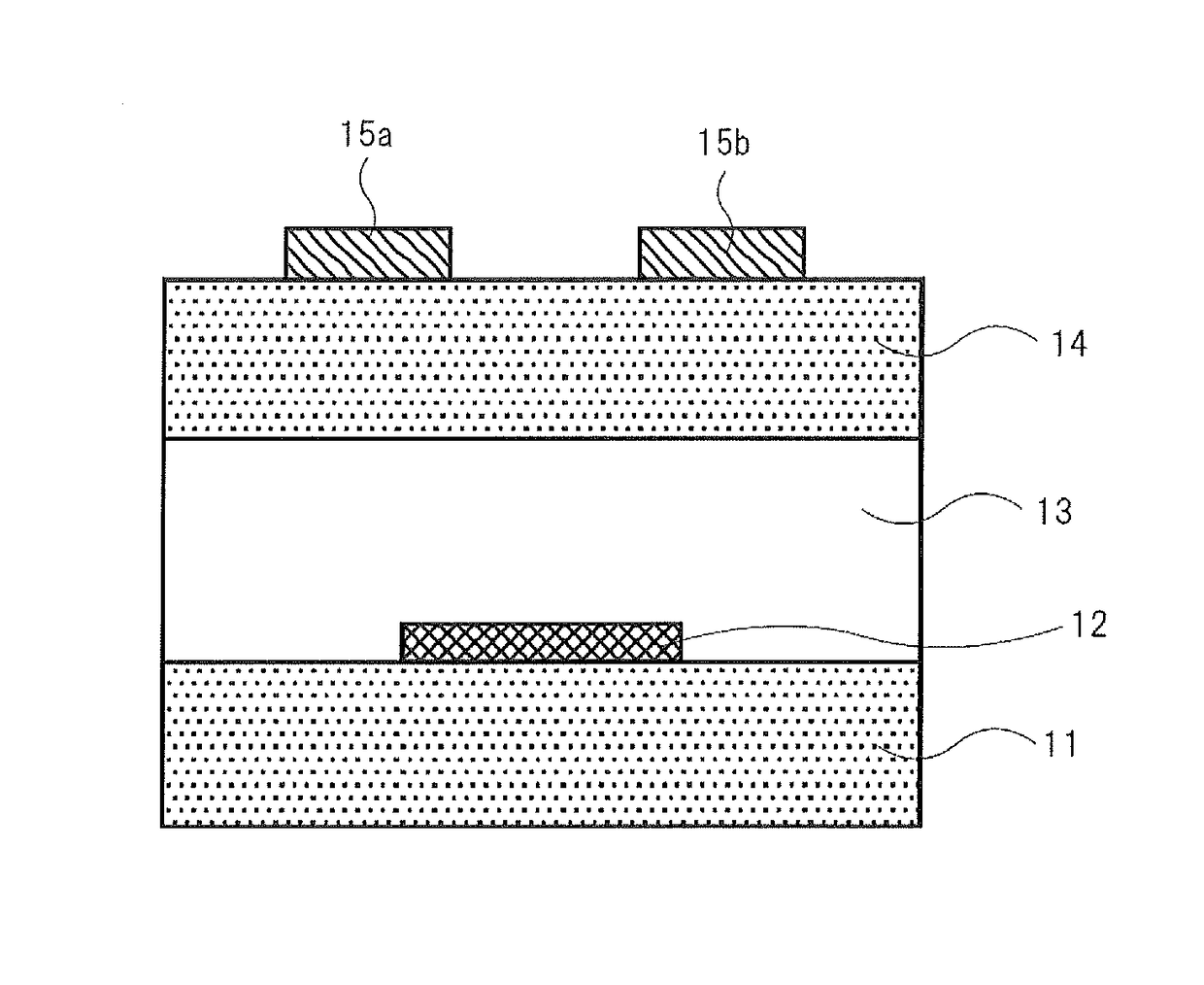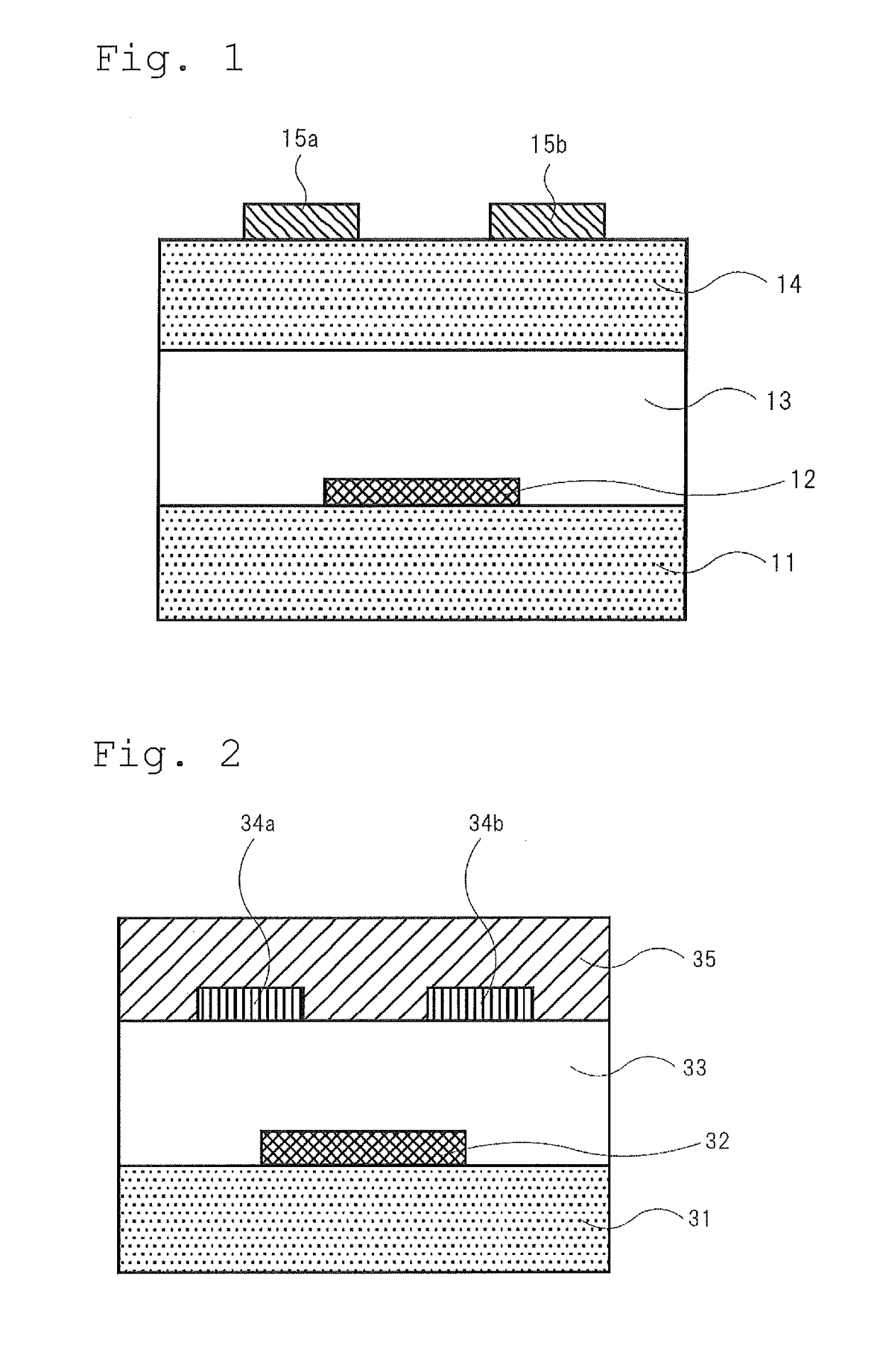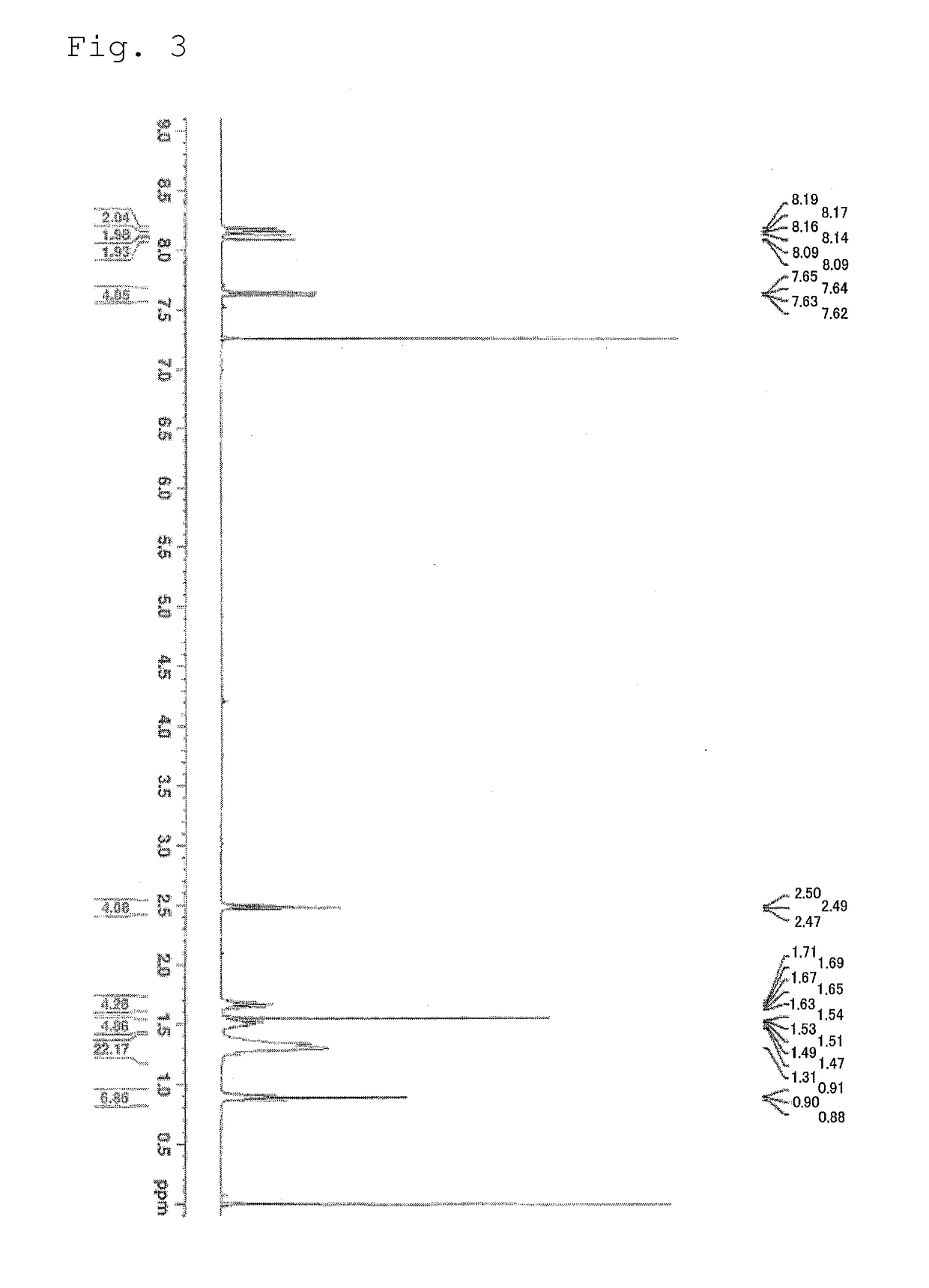Organic thin film transistor, organic semiconductor thin film, and organic semiconductor material
a thin film transistor and organic semiconductor technology, applied in the direction of non-metal conductors, conductors, organic chemistry, etc., can solve the problems of large change in threshold voltage in repeated driving, poor chemical stability, and inability to obtain good transistor characteristics immediately, etc., to achieve excellent chemical stability, high carrier mobility, and high carrier mobility
- Summary
- Abstract
- Description
- Claims
- Application Information
AI Technical Summary
Benefits of technology
Problems solved by technology
Method used
Image
Examples
example 1
Synthesis Example 1
Synthesis of Compound 5
[0175]The compound 5 as the compound represented by the formula (1) was synthesized by the specific synthesis procedures shown by the following scheme. In the following scheme, Tf represents a trifluoromethanesulfonyl group (a triflyl group).
[0176]
Synthesis of Compound 5a
[0177]0.5 mL of concentrated hydrochloric acid was added to 3,4-dihydro-6-methoxynaphthalen-1(2H)-one (25 g) (produced by Wako Pure Chemical Industries, Ltd.) and an ethanol solution (120 mL) of hydrazine monohydrate (4.8 g), and the mixture was stirred under heating to reflux for 4 hours. The solid matter thus deposited was collected by filtration, rinsed with ethanol, and then dried under reduced pressure to provide a compound 5a (18.6 g).
Synthesis of Compound 5b
[0178]HCl-containing acetic acid (60 mL) (produced by Sigma-Aldrich Corporation) and acetic anhydride (6 mL) were stirred in a nitrogen atmosphere at 60° C. for 2 hours, to which the compound 5a (15 g) was added, a...
example 2
Formation of Semiconductor Active Layer (Organic Semiconductor Layer) Only with Compound
[0193]The compound of the invention or the comparative compound (1 mg each) and toluene (1 mL) were mixed and heated to 100° C. to prepare a coating solution for a non-light emitting organic semiconductor device. The coating solution was cast on a substrate for measuring FET characteristics heated to 90° C. to form an organic semiconductor thin film for a non-light emitting organic semiconductor device, thereby providing an organic thin film transistor device of Example 2 for measuring FET characteristics. The substrate for measuring FET characteristics used was a silicon substrate having a bottom-gate bottom-contact structure having chromium / gold electrodes (gate width W=100 mm, gate length L=100 μm) disposed in an interdigitated form as source and drain electrodes, and SiO2 (thickness: 200 nm) as an insulating film (the schematic structural illustration shown in FIG. 2).
[0194]The FET characteri...
example 3
Formation of Semiconductor Active Layer (Organic Semiconductor Layer) with Both Compound and Binder
[0202]Organic thin film transistor devices for measuring FET characteristics were produced in the same manner as in Example 2 except for using a coating solution prepared in such a manner that the compound of the invention or the comparative compound (1 mg each), 1 mg of PαMS (poly(α-methylstyrene), Mw: 300,000, produced by Sigma-Aldrich, Inc.) and toluene (1 mL) were mixed and heated to 100° C., and then evaluated in the same manner as in Example 2.
[0203]The results obtained are shown in Table 2 below.
[0204]
TABLE 2Change inthresholdOrganicCarriervoltage aftersemiconductormobilityrepeatedDevice No.material(cm2 / Vs)drivingNoteDevice 17Compound 11 × 10−1AinventionDevice 18Compound 53 × 10−1AinventionDevice 19Compound 84 × 10−1AinventionDevice 20Compound 106 × 10−2AinventionDevice 21Compound 113 × 10−1AinventionDevice 22Compound 131 × 10−1AinventionDevice 23Compound 145 × 10−3AinventionDev...
PUM
| Property | Measurement | Unit |
|---|---|---|
| thickness | aaaaa | aaaaa |
| thickness | aaaaa | aaaaa |
| thickness | aaaaa | aaaaa |
Abstract
Description
Claims
Application Information
 Login to View More
Login to View More - R&D
- Intellectual Property
- Life Sciences
- Materials
- Tech Scout
- Unparalleled Data Quality
- Higher Quality Content
- 60% Fewer Hallucinations
Browse by: Latest US Patents, China's latest patents, Technical Efficacy Thesaurus, Application Domain, Technology Topic, Popular Technical Reports.
© 2025 PatSnap. All rights reserved.Legal|Privacy policy|Modern Slavery Act Transparency Statement|Sitemap|About US| Contact US: help@patsnap.com



